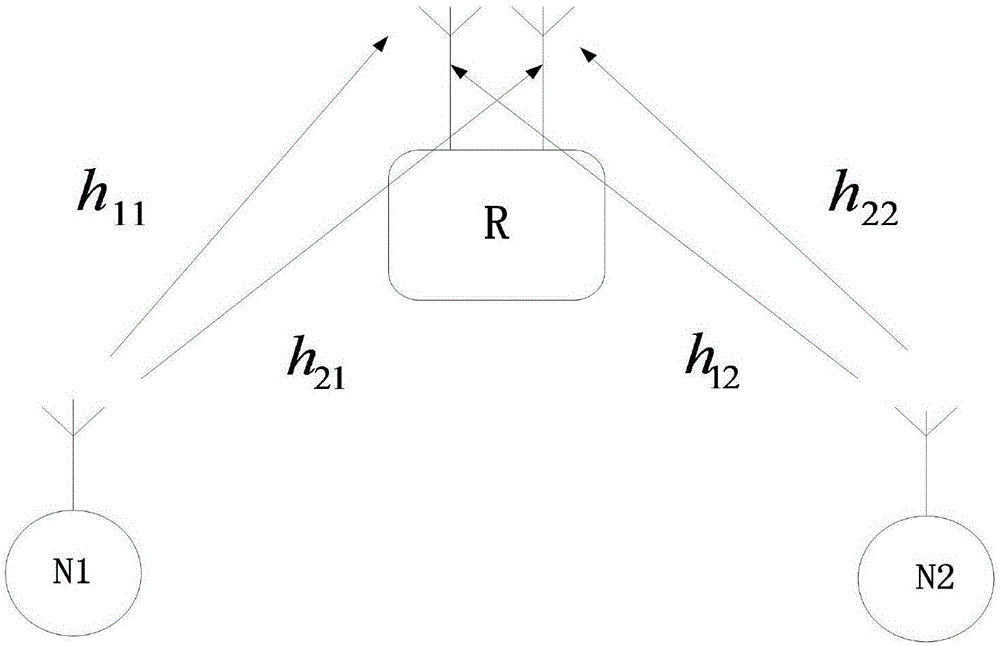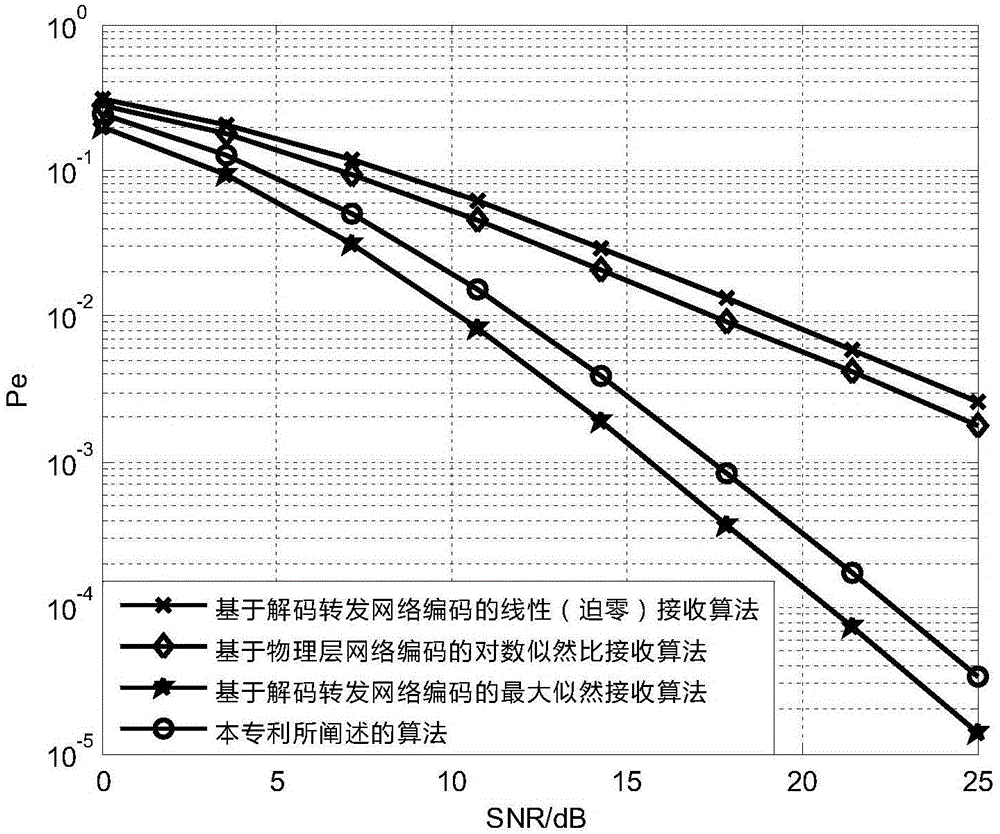Full diversity multi-antenna two-way relay receiving method based on combination of Dempster-Shafer evidence theory and physical-layer network coding
A technology of network coding and evidence theory, applied in the research field of cooperative communication and signal processing of multiple-input multiple-output systems, which can solve problems such as bit error performance gap
- Summary
- Abstract
- Description
- Claims
- Application Information
AI Technical Summary
Problems solved by technology
Method used
Image
Examples
Embodiment Construction
[0059] The algorithm of the present invention will be further described below in conjunction with the accompanying drawings and embodiments.
[0060] The method flow chart described in the present invention is as figure 1 shown, including the following steps:
[0061] Step 1, establish a multi-antenna two-way relay system model without direct link.
[0062] Create a network consisting of two single-antenna users and one containing n R = Two-way relays with 2 antennas form an uncoded equivalent virtual MIMO model such as figure 2 shown. The model can be expressed as: Y=HX+N. The elements of the channel matrix H are modeled as independent and identically distributed complex Gaussian random variables with a mean of 0 and a variance of 1; the transmission vector X is obtained by BPSK or QPSK modulation of a randomly generated 0 and 1 bit stream, and the energy of the transmitting antenna is returned to One becomes 1. The complex Gaussian white noise vector N has a mean of 0...
PUM
 Login to View More
Login to View More Abstract
Description
Claims
Application Information
 Login to View More
Login to View More - R&D
- Intellectual Property
- Life Sciences
- Materials
- Tech Scout
- Unparalleled Data Quality
- Higher Quality Content
- 60% Fewer Hallucinations
Browse by: Latest US Patents, China's latest patents, Technical Efficacy Thesaurus, Application Domain, Technology Topic, Popular Technical Reports.
© 2025 PatSnap. All rights reserved.Legal|Privacy policy|Modern Slavery Act Transparency Statement|Sitemap|About US| Contact US: help@patsnap.com



